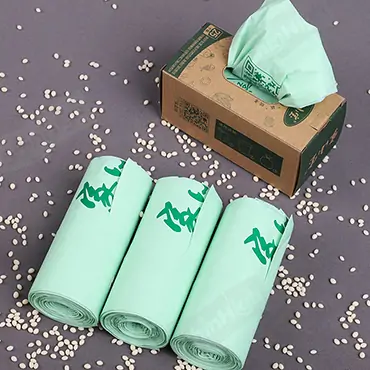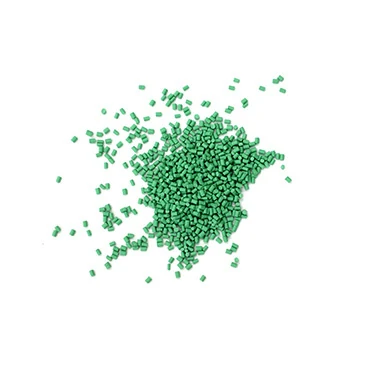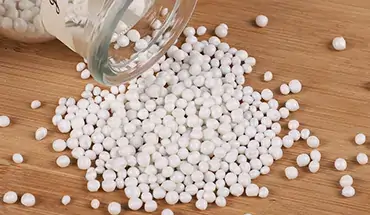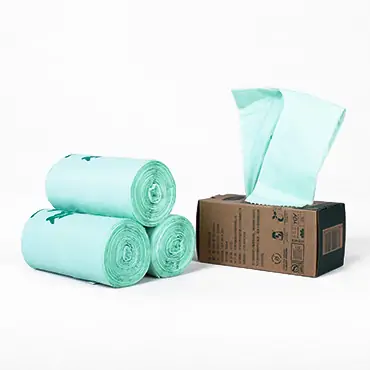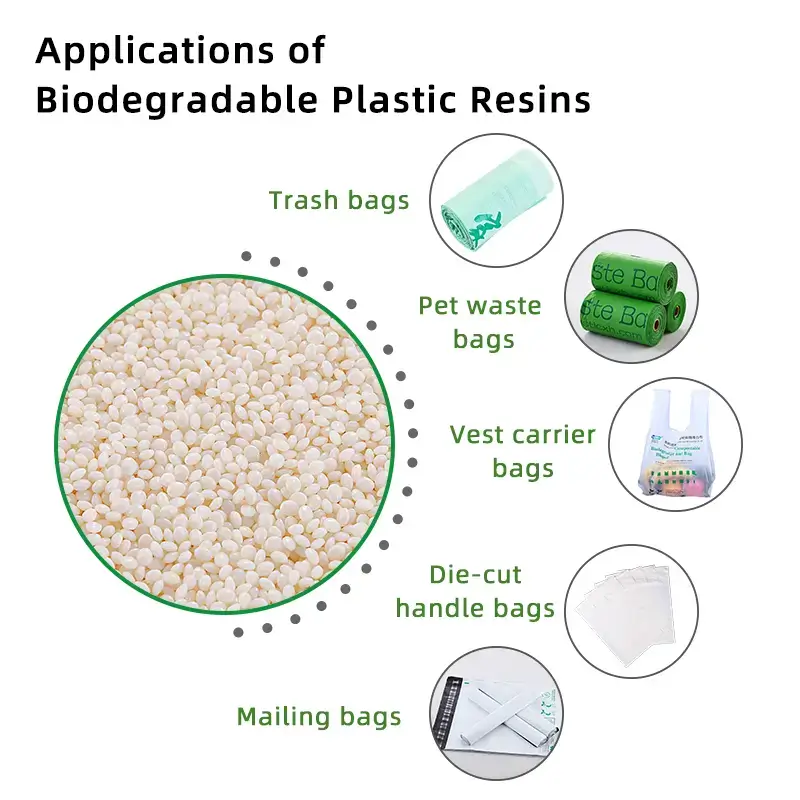 We’re all trying to do our part for the planet. We diligently sort our recycling, conserve water, and maybe even buy those “biodegradable” bags, thinking we’re making an eco-friendly choice. Recent reports show that the global biodegradable polymer market size was valued at USD 24.4 billion in 2030.
We’re all trying to do our part for the planet. We diligently sort our recycling, conserve water, and maybe even buy those “biodegradable” bags, thinking we’re making an eco-friendly choice. Recent reports show that the global biodegradable polymer market size was valued at USD 24.4 billion in 2030.
However, are we being fooled? The truth is, many “biodegradable” bags don’t fully degrade in real-world conditions, contributing to environmental problems similar to traditional plastics.
The real issue lies in a process called “oxidative degradation,” where bags break down into tiny plastic fragments (microplastics) instead of truly biodegrading.
In this article, we’ll analyze the effectiveness (or lack thereof) of these so-called biodegradable bags, expose the industry’s shortcomings regarding labeling and regulations, and arm you with the knowledge to make truly informed choices.
The Promise of Biodegradable Bags
What does “biodegradable” even mean? True biodegradability involves the complete breakdown of a material by microorganisms into natural substances like water, carbon dioxide, and biomass. This should happen within a reasonable timeframe and in common disposal environments.
There are several types of materials marketed as biodegradable:
- Compostable Plastics (PLA, PBAT, etc.): These require specific composting conditions like high heat and humidity to break down properly.
- Bio-based Plastics: Made from renewable resources (like cornstarch and Bagasse), but not necessarily biodegradable.
- Traditional Plastics with Additives (Oxo-degradable): Oxidation degradation AIDS (such as photosensitizers) are added to traditional plastics (such as PE, PP, PS, PET). These additives promote the oxidation of plastics under the action of light, heat, and oxygen, accelerating their fragmentation and degradation.
The benefits of genuine biodegradable bags are significant. They could reduce landfill waste, decrease plastic pollution, and lower our carbon footprint. But, and it’s a big but, the benefits are often unrealized.
The “Oxo-Degradable” Trap
Let’s dive into oxo-degradable plastics, the wolf in sheep’s clothing.
How Oxo-Degradable Plastic Bags Work (or Don’t):
Oxidative degradation uses metal additives to cause plastic to fragment into smaller pieces upon exposure to oxygen, heat, and/or UV light. Sounds good, right? Wrong.
- The Microplastic Problem: Oxo-degradable plastics don’t truly disappear. They just break down into microplastics, which contaminate our soil, water, and even our food chain. These microplastics can persist in the environment for decades, posing risks to ecosystems and human health.
- Contamination of Recycling Streams: They can contaminate traditional plastic recycling, reducing the mechanical properties (such as strength and toughness) of recycled plastics and making them less valuable.Limited Degradation in Landfills: They often don’t degrade in landfills due to the lack of oxygen, darkness, and moisture.
There are no clear, universally accepted standards for oxo-degradable plastics. This makes it difficult to assess their true environmental impact and differentiate them from truly biodegradable materials.
Industry Chaos and Greenwashing
The lack of clear labeling and regulations fuels the problem. The terms “degradable,” “biodegradable,” and “compostable” are often used interchangeably, confusing consumers. (In short, their coverage is gradually decreasing. For example: Biodegradation is a part of degradability. All biodegradation belongs to degradability, but the reverse is not necessarily true.)
- Examples of Misleading Marketing: You might see claims like “degrades in sunlight” or “breaks down naturally,” without any evidence or certification to back them up. Vague wording is a major red flag.
- The Role of Certifications (and their limitations): Certifications like BPI (Biodegradable Products Institute) or OK Compost are helpful, but not foolproof. Even certified compostable bags may not be properly composted due to limited composting infrastructure or improper sorting by consumers.
- Varying Regulations Around the World: Different countries have different rules regarding biodegradable bags, creating further confusion. Some countries have banned oxo-degradable plastics, while others still allow them.
Consumer Identification Guide
“Is my biodegradable bag actually biodegradable?” Here’s a guide on how to tell the real deal from the fakes:
- Visual Inspection:
Look for specific certifications (BPI, OK Compost, etc.) And understand what those certifications mean.
Check for clear and unambiguous labeling. Avoid bags that only say “degradable” or have vague wording. - Material Composition Clues:
PLA (Polylactic Acid): Often feels slightly different from traditional plastic.
Check for “Oxo-degradable” or “Oxo-biodegradable” on the label – these are red flags.
The “Home Compost Test”: Home composting is not a reliable way to test biodegradability for most bags. Home compost piles rarely reach the required conditions for complete breakdown. But, a bag’s failure to break down at home DOES NOT necessarily mean it isn’t degradable in proper composting conditions. (Unless your bag has the label of home compost) - Company Research:
Look into the company’s sustainability practices and claims.
Check for transparency about the materials used and the disposal requirements.
Look for third-party certifications or documentation.
What to ask retailers or manufacturers for additional verification: Request documentation and information about the bag’s composition, certifications, and disposal requirements.
Beyond Biodegradable Bags: Sustainable Alternatives
While truly biodegradable options are preferable, let’s explore other ways to minimize our impact:
- Reusable Bags: The most impactful choice is to use reusable bags for shopping and other purposes.
- Other Sustainable Packaging Options: Consider paper bags (with sustainably sourced paper), reusable containers, and innovative packaging materials.
- Reducing Overall Consumption: The most important step is to reduce the amount of packaging we use in the first place. Choose products with minimal packaging or opt for bulk buying.
Call to Action & Conclusion
Let’s recap: Many “biodegradable” bags are not as eco-friendly as they seem, particularly those using oxo-degradable technology. Confusing labels and a lack of regulation contribute to the problem. As consumers, we need to be more informed and demand better.
Here’s what you can do:
- Be mindful of the bags you use and choose genuinely sustainable options whenever possible.
- Contact manufacturers and retailers to demand greater transparency and accountability. Ask them about the specific materials used in their bags and their end-of-life disposal options.
- Support policies that promote true biodegradability and reduce plastic pollution.
The plastic pollution crisis demands collective action. By making informed choices and advocating for change, we can all make a difference and create a more sustainable future.

